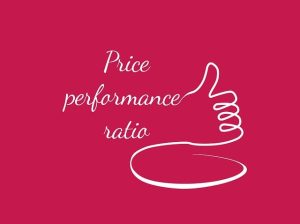The cost of semaglutide is influenced by production, distribution, market demand, and regulatory factors, making it complex for patients. However, various strategies can help manage this expense: negotiating with pharmacies, leveraging savings programs, enrolling in discount initiatives (like patient assistance programs), exploring generic alternatives, and staying informed about regional pricing trends. Eligibility for semaglutide discounts varies based on programs and pharmaceutical companies, focusing on accessibility for those with limited healthcare coverage or specific medical needs. Balancing online retailers and local pharmacies allows for transparent deal comparison and effective expense management. The future looks promising with potential cost reductions through generics and improved delivery methods, aiming to expand access to this essential diabetes therapy globally.
“Discover ways to manage the cost of semaglutide with our comprehensive guide. Semaglutide, a game-changer in diabetes treatment, comes with a significant price tag. This article unravels the complexities of semaglutide discounts and savings programs, offering insights into how patients can access affordable options. From discount programs and coupons to exploring eligibility for assistance initiatives, we provide a roadmap to navigate the financial landscape of this life-changing medication. Start saving today with our expert advice.”
Understanding the Cost of Semaglutide: A Comprehensive Overview

The cost of semaglutide, like any prescription medication, can be a significant financial burden for many individuals. Understanding the various factors that influence pricing is essential when seeking ways to manage costs and access this important treatment. The cost of semaglutide is determined by several key elements, including its production costs, distribution logistics, market demand, and regulatory considerations. Each of these plays a role in setting the final price point for patients.
Prescription drug prices are often complex and can vary widely depending on where you purchase them. Generics versus brand-name drugs, pharmacy networks, insurance coverage, and regional differences all contribute to these variations. For semaglutide, the availability of generic versions can significantly reduce costs over time. Staying informed about pricing trends, negotiating with pharmacies, and taking advantage of savings programs are strategic approaches that patients can employ to mitigate the financial impact of this essential medication.
Unlocking Savings: Exploring Discount Programs and Coupons

Unlocking Savings: Exploring Discount Programs and Coupons
The cost of semaglutide can be a significant consideration for patients, especially those managing chronic conditions. However, there are several strategies to help reduce the financial burden. One effective approach is to take advantage of discount programs and coupons designed specifically for this medication. Many pharmaceutical companies offer these incentives to make their treatments more accessible. By enrolling in such programs, individuals can gain access to substantial savings on their semaglutide prescriptions.
These discounts can be particularly beneficial for those with limited healthcare coverage or who are self-paying. They often come in the form of direct rebates or coupons that lower the out-of-pocket expense at the pharmacy. With a bit of research, patients can discover various online platforms and retailer partnerships that promote these offers. Staying informed about available discounts is a smart way to manage the cost of semaglutide and ensure better accessibility for those in need.
Eligibility Criteria: Who Qualifies for Semaglutide Discounts?

The eligibility criteria for Semaglutide discounts vary depending on the program and the pharmaceutical company offering the savings. Typically, these programs are designed to make this essential medication more accessible to patients who may struggle with the high cost of semaglutide. Qualifications often include being a resident of a specific country or region, having a valid prescription for semaglutide, and meeting certain income thresholds. Some programs cater to individuals with limited or no insurance coverage, while others may be open to those who have reached a certain age or have a specific medical condition requiring long-term treatment with semaglutide.
Understanding the eligibility requirements is crucial for patients seeking financial assistance. Those who qualify can significantly reduce the cost of their semaglutide prescriptions, making it more feasible to manage their health effectively. Many discount programs offer savings cards or coupons that can be redeemed at pharmacies, ensuring patients get the prescribed medication without breaking the bank.
Prescription Assistance and Patient Support Initiatives

Many patients face challenges in managing the cost of semaglutide, a medication that requires regular prescription refills. To alleviate this burden, various prescription assistance programs and patient support initiatives have been established. These programs offer financial aid, co-pay assistance, and discount cards, making semaglutide more accessible and affordable for those who need it.
Patient support organizations often collaborate with pharmaceutical companies to facilitate access to these savings programs. They provide resources and guidance on how to enroll in the initiatives, ensuring patients can navigate the application process seamlessly. By taking advantage of these assistance programs, individuals can focus more on their health journey instead of worrying about the financial implications of their medication.
Comparing Prices: Online vs. Local Pharmacies

When comparing prices for Semaglutide, it’s beneficial to explore both online and local pharmacy options. Online retailers often offer significant discounts on prescription drugs, making them an attractive choice for saving on the cost of semaglutide. These platforms can provide transparent pricing, allowing you to easily compare deals and find the best value.
Local pharmacies, however, may have their advantages too. They often have loyalty programs or savings initiatives that can offset the higher prices. Additionally, accessing the medication quickly without waiting for delivery is a factor some patients consider crucial. Therefore, a balanced approach involving both online research and local pharmacy visits can help individuals navigate the market efficiently while managing their semaglutide expenses effectively.
Insurance Coverage and Negotiation Strategies

Semaglutide, a groundbreaking medication for diabetes management, can be a significant financial burden due to its high cost. Understanding insurance coverage and negotiating strategies is crucial when seeking savings on this essential therapy. Many health insurance plans include semaglutide in their coverage, but out-of-pocket expenses can still be substantial. Patients should review their policy details to comprehend co-pays, deductibles, and any specific requirements for prescription drugs.
Negotiation is a powerful tool to navigate the cost of semaglutide. Patients can communicate with both insurance providers and pharmacies to explore options like generic alternatives (when available), patient assistance programs, or discount cards. These strategies can help reduce the financial strain associated with this life-changing medication, ensuring better accessibility for those who need it most.
Future Prospects: Innovations in Affordability for Semaglutide

The future of diabetes management looks promising with potential innovations aimed at making semaglutide, a groundbreaking medication, more accessible and affordable. As the demand for effective diabetes treatments grows, pharmaceutical companies are exploring various strategies to reduce the cost of semaglutide, making it available to a broader patient population. One approach involves developing generic versions of the drug, which could significantly lower prices by increasing competition in the market. Additionally, ongoing research focuses on improving delivery methods, such as introducing novel administration forms or technologies, potentially reducing treatment costs and enhancing patient convenience.
These advancements in affordability are crucial as semaglutide has shown remarkable efficacy in managing type 2 diabetes and weight-related conditions. By making this treatment more accessible, healthcare providers can offer personalized care to a larger number of patients, improving overall diabetes management and public health outcomes. With continuous innovation and collaboration between industry leaders and regulatory bodies, the future prospects for semaglutide’s cost reduction seem promising, opening doors for improved accessibility and better diabetes care worldwide.
